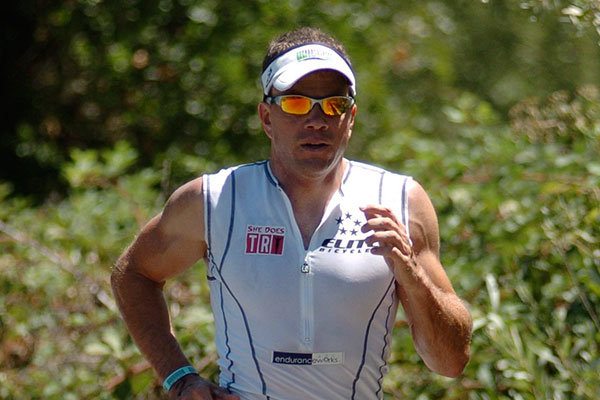One valuable service that a coach can provide even an experienced athlete is objective feedback via a consultation.
A triathlete friend of mine was training for IRONMAN 70.3 St. George in Utah.
My friend’s concern was that because of poor weather, he did not have the opportunity to do enough riding outside. He recalled that when he was training for a past IRONMAN 70.3, he was able to complete 2-3 hour bike rides outdoors during the the last 3 months prior to his race. He was pessimistic on whether building bike fitness indoors would transfer to outdoor success.
He emailed me his “typical” training schedule for feedback:
Sunday:
- Sleep-in
- Strength train 45 minutes
- Lifefitness Upright Bike Level 16 @ 60 rps for 3:30-5:30 hours
Monday:
- Strength train for 45-60 minutes in AM
- Spinning Bike for 2-3:30 hours
Tuesday:
- Strength train for 30 minutes, followed by 30 minutes on Cybex Step Mill (looks like revolving stairs)
- Swim 3,000-3,500 yards then 30 minutes on Cybex Step Mill
Wednesday:
- Strength train for 60 minutes
- Spinning Bike for 3-3:30 hours
Thursday:
- Swim for 2,000 yards
- Cybex Step Mill for 2 hours
Friday:
- Swim for 3,000-4,500 yards
- Run 8-16 miles (out and back hilly loop)
Saturday:
- Swim for 3,000-4,000 yards
- Bike @ home on indoor trainer or Lifefitness Upright Bike @ Merritt Fort Ave.
Here’s the feedback I gave the athlete:
It’s hard for me to make too much of an assessment without knowing additional information like your background, goals, past results, whether or not you use intensity training zones, etc. – I have all my clients fill out an exhaustive questionnaire before we meet – but I can give you some quick thoughts.
I would agree that riding too much indoors is not ideal but it’s what you have to do. Mix up your indoor rides – include some lower rpm, higher intensity (but not too high) to mimic the changing terrain of outdoors will be helpful Even if you can only get in one ride a week outdoors on the weekend, it would be better than none.
The one week schedule doesn’t show how the weeks vary from week to week, so you’ll want to mix in easier weeks with harder weeks. A classic progression is 2-3 weeks that build on each other followed by an easier recover week then repeating the cycle. You can adjust workout frequency, intensity and time to make weeks harder or easier. The cycles what’s up structured around your personal schedule. For example, if you plan to go skiing for a week in February then make that an easy week.
You have 12 weeks before race day so training should become more race-specific to in order to prepare your body for specific demands of race:
- Add a BRICK run (20-30 min) after your long ride every week.
- Include more moderate intensity efforts on the bike and run (e.g. hills, Z3 tempo efforts) for more sport-specific strength.
- Utah has both a hilly bike and run course so you’ll want to practice both riding and running up and down hills (especially to ensure adaptation to eccentric contractions of downhill running – otherwise, you’re going to be really, really sore). Ride in a bigger gear on the trainer to simulate riding uphill.
- Substitute runs back in for the step mill (non-specific).
- Practice pacing, especially during your longer rides and run.
Finally, take a complete rest day off as needed each week. Your body and your motivation will recover better.
—
Do you need with planning your triathlon or run training? Sign up for a consult with us!
David B. Glover


